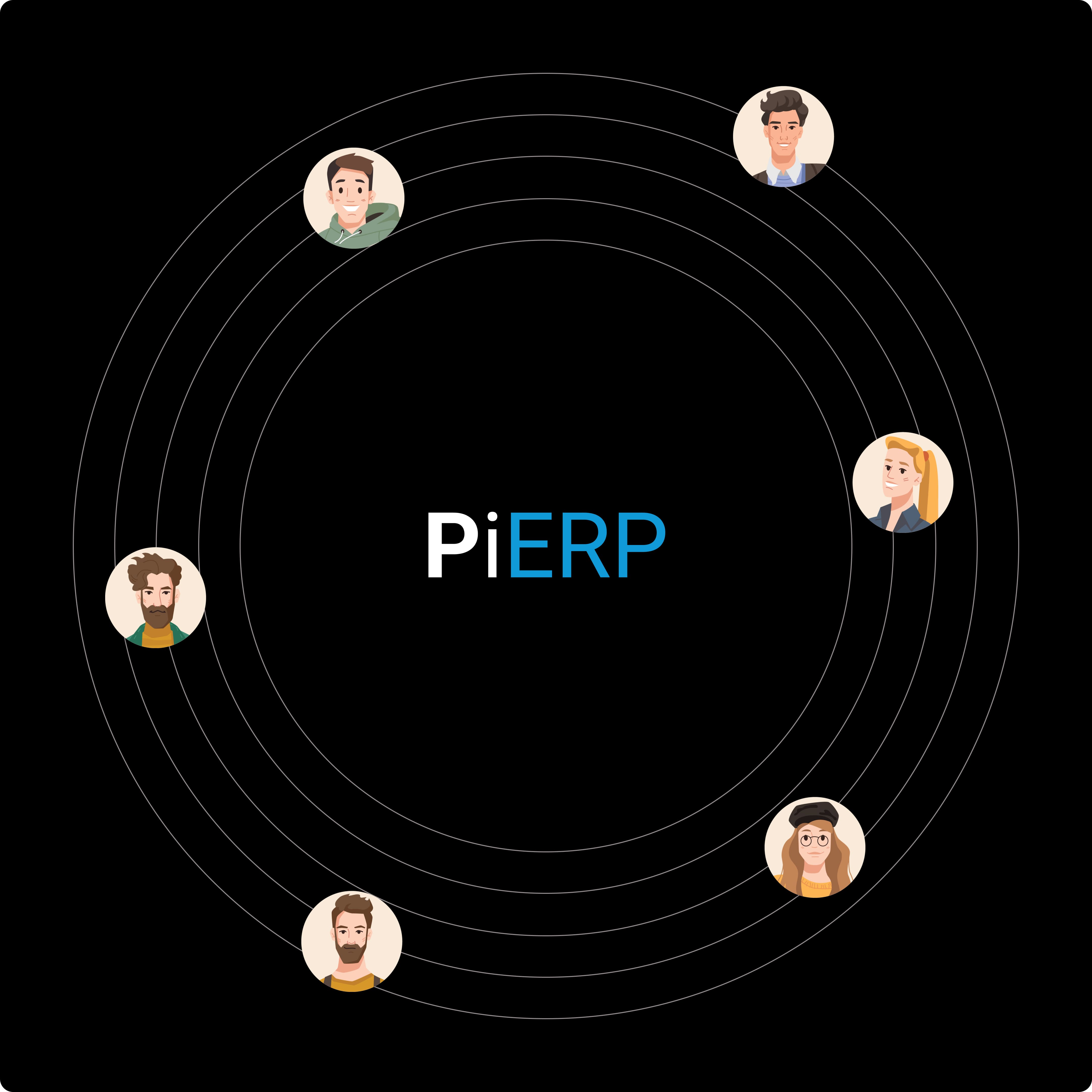When it comes to implementing an Enterprise Resource Planning (ERP) system, businesses face a crucial decision regarding deployment options. The three primary deployment models are Cloud, On-Premise, and Hybrid ERP systems. Each model offers distinct advantages and comes with its own set of challenges. Understanding these can help businesses choose the right ERP solution that aligns with their needs, goals, and resources. Here’s an in-depth look at each deployment option to guide you through the decision-making process.
Cloud ERP
What is Cloud ERP?
Cloud ERP systems are hosted on the servers of the ERP provider and accessed over the internet. Instead of installing the software on your company’s hardware, you use the software via a web browser. This means that all data, applications, and processes are managed and stored off-site by the provider. With cloud ERP software, you can conveniently access your system from anywhere with an internet connection, while the provider takes care of maintenance, updates, and data security, simplifying your IT management.
Benefits of Cloud ERP:
- Cost-Effective: Cloud ERP solutions generally involve a subscription-based pricing model, which reduces the need for significant upfront investments. Instead of purchasing hardware and software, you pay a regular subscription fee, which often includes maintenance, support, and updates. This makes cloud based ERP software an appealing option for companies looking to manage costs effectively.
- Scalability: Cloud ERP systems offer flexibility and scalability. As your business grows, you can easily adjust your subscription to include more users, additional features, or increased storage. This flexibility is especially beneficial for businesses that are growing quickly or experiencing seasonal changes.
- Accessibility: One of the significant advantages of Cloud based ERP is its accessibility. Since the system is hosted online, you can access it from anywhere with an internet connection. This is ideal for businesses with remote teams or multiple locations, as it ensures that all employees have real-time access to the system and data.
- Automatic Updates: Cloud ERP providers handle all software updates and maintenance. This means you always have access to the latest features and security enhancements without needing to worry about manual upgrades. This can be a significant time-saver and ensures that your system remains up-to-date.
Challenges of Cloud ERP:
- Dependence on Internet: Cloud ERP systems rely on a stable internet connection. If your internet service experiences disruptions or outages, it can affect your ability to access the ERP system. While most providers offer high uptime guarantees, it's important to consider this dependency.
- Data Security: While cloud providers invest heavily in security, some businesses remain concerned about storing sensitive data off-site. It’s crucial to assess the security measures of the provider, including data encryption, compliance with regulations, and backup procedures.
- Ongoing Costs: Although the subscription model can be cost-effective, the recurring fees can add up over time. Businesses should evaluate the total cost of ownership, including subscription fees, to ensure it aligns with their budget and financial projections.
On-Premise ERP
What is On-Premise ERP?
On-Premise ERP systems are installed and run on servers and hardware located within your company’s facilities. This means that the ERP software is managed internally, and all data and applications are hosted on-site.
Benefits of On-Premise ERP:
- Control: On-Premise ERP offers greater control over the system and data. Businesses have direct access to their hardware and software, allowing for more customization and integration with existing systems. This is beneficial for companies with specific security or compliance requirements.
- Customization: On-Premise ERP systems can be extensively customized to fit the unique needs and processes of a business. Unlike Cloud ERP, which may have limitations in terms of customization, On-Premise systems allow for more tailored solutions that can be adapted to specific business operations.
- One-Time Cost: On-Premise ERP typically involves a one-time upfront cost for purchasing the software and hardware. While this can be a significant initial investment, it may be lower in the long run compared to ongoing subscription fees associated with Cloud ERP.
Challenges of On-Premise ERP:
- High Initial Investment: The initial costs of purchasing and installing On-Premise ERP systems can be substantial. This includes expenses for hardware, software licenses, and IT personnel to manage and maintain the system.
- Maintenance Responsibilities: With On-Premise ERP, your IT team is responsible for system maintenance, updates, and security. This can require additional resources and expertise, as well as ongoing attention to ensure the system remains functional and secure.
- Scaling Issues: Scaling an On-Premise ERP system can be complex and costly. Adding new users or features often requires purchasing additional hardware and software, which can be both time-consuming and expensive.
Hybrid ERP
What is Hybrid ERP?
Hybrid ERP combines elements of both Cloud and On-Premise ERP systems. This model allows businesses to use cloud-based applications for certain functions while keeping other components on-site. This approach offers flexibility and the ability to leverage the strengths of both deployment methods.
Benefits of Hybrid ERP:
- Flexibility: Hybrid ERP combines the advantages of both cloud and on-premise solutions. Businesses can utilize cloud-based solutions for scalability and remote access while keeping sensitive or critical data on-premise. This flexibility allows companies to tailor their ERP system to their specific needs and preferences.
- Cost Optimization: By combining cloud and on-premise elements, businesses can optimize costs. For example, you might use cloud services for less critical functions and on-premise solutions for core operations, balancing the cost and benefits of each model.
- Data Management: Hybrid ERP allows for critical or sensitive data to be kept on-site, ensuring that businesses maintain control over their most valuable information. At the same time, less sensitive functions can benefit from the scalability and accessibility of the cloud.
Challenges of Hybrid ERP:
- Complex Integration: Managing a hybrid ERP system can be complex. Integrating cloud and on-premise components requires careful planning and coordination to ensure seamless operation and data flow between different systems.
- Integration Issues: Ensuring smooth integration between cloud and on-premise systems may require additional middleware or customization. This can introduce complexities and potential challenges in maintaining consistency and compatibility.
- Consistency: Maintaining consistency across hybrid systems can be challenging. Businesses need to ensure that data and processes are aligned between cloud and on-premise components, which might require ongoing management and oversight.
Conclusion:
Choosing the right ERP deployment model—Cloud, On-Premise, or Hybrid—depends on your business’s specific needs, goals, and resources. Each option offers unique benefits and comes with its own set of challenges. By understanding these deployment models and evaluating your company’s requirements, you can make an informed decision that aligns with your business objectives and supports long-term success.
Whether you prioritize cost-effectiveness, control, flexibility, or a combination of these factors, carefully assess your options to select the ERP deployment that best meets your needs. With the right approach, you can leverage ERP technology to streamline your operations, enhance productivity, and drive growth.
Choosing the right ERP system can be tricky, but PiERP makes it easier. PiERP is the best ERP software that works well whether you need Cloud, On-Premise, or Hybrid solutions. PiERP’s cloud-based system offers great flexibility and is easy to scale as your business grows. Plus, it can be customized to fit your specific needs. For those with unique requirements, PiERP integrates smoothly with existing systems and comes with strong support. With PiERP, you get advanced features while keeping control and managing costs effectively, making it a great choice for any ERP deployment model.






